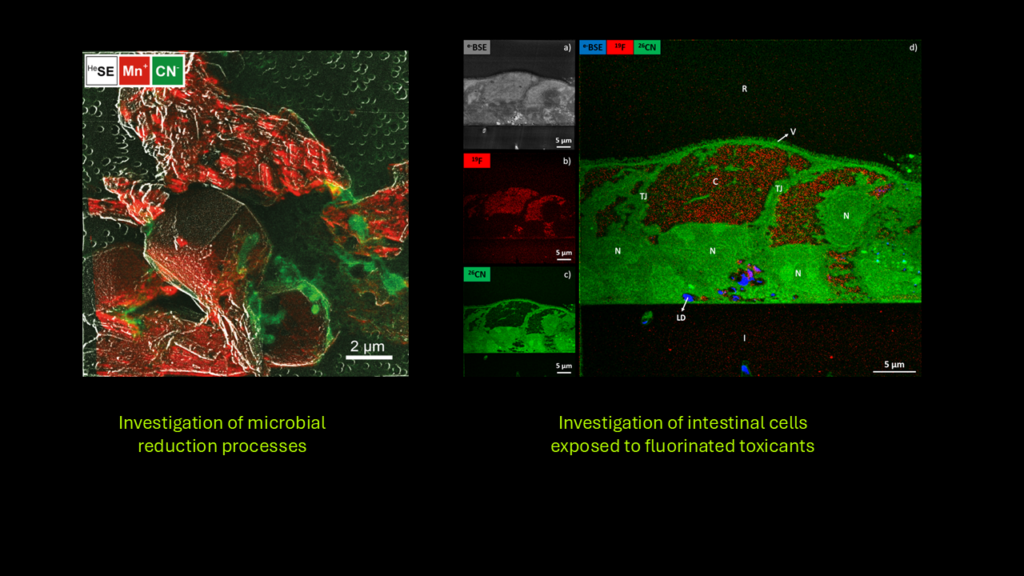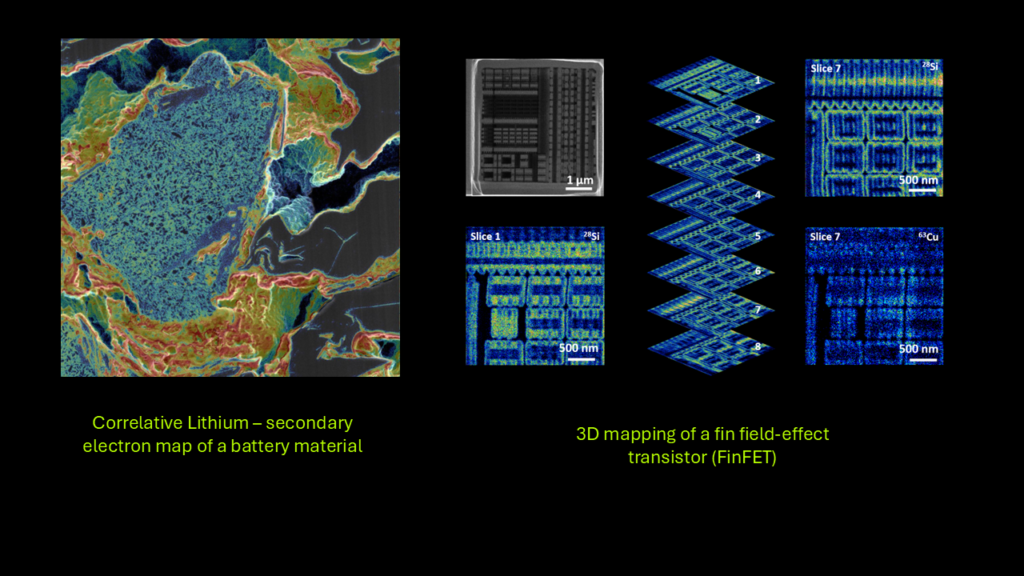BACK TO RESEARCH WITH IMPACT: FNR HIGHLIGHTS
As the FNR marks 25 years since its creation, we highlight 25 examples of FNR-supported research with impact. Since arriving in Luxembourg in 2002, Tom Wirtz has led various projects resulting in the development of new methodologies and instruments for nano-analytics, making it possible to capture images and 3D maps that reveal the chemical composition of a sample at the nanoscale.
“25 years ago, people were buying instruments. Today, they want to buy solutions,” explains Dr Tom Wirtz, Head of the Scientific Instrumentation and Process Technology (SIPT) unit at the Luxembourg Institute of Science and Technology (LIST).
“Such solutions consist of sample preparation methodologies, analytical workflows, data mining algorithms, and of course the instrument. The field has hence become much more interdisciplinary and our team also developed accordingly.”
The Advanced Instrumentation for Nano-Analytics (AINA) group of the SIPT unit focuses on the development of scientific instruments based on charged particle beams and laser beams and correlative workflows that take advantage of these instruments. The group’s R&D activity covers fundamental investigations, instrument development and application development.


Wide application: from material sciences to life sciences and geology
The methodologies and instruments Wirtz and his team have developed over the years have been used in multiple fields: From materials science to life sciences, as well as geology, to name a few examples.
In materials science, the team’s instruments, as well as the studies they performed using the instruments, played an important role in the development of new photovoltaic – solar cell – devices. In the field of life sciences, the team took part in several studies revolving around nanotoxicology, where they localised and chemically identified nanoparticles in biological tissues.
“Because of this demonstrated impact, several of the instruments that we developed are today commercially available from world leading instrument manufacturers and are used by researchers and engineers in academia, research centers and industry all over the world.” The structural characterisation and the chemical analysis at the nanometer scale, which are both enabled by our developments, are of highest relevance in multiple fields, that can be as diverse as high-resolution imaging of dopant distributions in complex electronic devices, the generation of chemical maps of sub-cellular structures in biological samples to understand the underlying physiological processes, or isotopic ratio measurements at the nanoscale in geological samples. Our research thus has an impact on many different fields. ”Dr Tom Wirtz Head of the Scientific Instrumentation and Process Technology (SIPT) unit at the Luxembourg Institute of Science and Technology (LIST)
Future challenges: Devices become smaller, need to be investigated during use
Looking toward the future, there are a number of challenges for Witz and his team: features that need to be imaged become smaller and smaller, the architectures that need to be mapped become increasingly complex in 3D, for example in chips, while the materials used in devices also become more complex. There will be a need to be able to investigate devices at the nanoscale while they are in operation, such as batteries while they are being charged or discharged.

“We are now reaching fundamental limits in terms of sensitivity and spatial resolution. To progress further, new sample probing mechanisms need to be conceived, understood, tested and implemented. These new sample probing mechanisms will certainly need to combine charged particle beams, laser beams and probably a few further ideas that still seem too crazy today to even write them down. We will continue our efforts to develop solutions that will be able to cope with these future challenges and hence to remain a key player in the field of nano-analytics. ”Dr Tom Wirtz Head of the Scientific Instrumentation and Process Technology (SIPT) unit at the Luxembourg Institute of Science and Technology (LIST)
On the impact of FNR funding
“Over the years, Wirtz has been Principal Investigator on around a dozen FNR-funded projects. “Our research benefited enormously from the many FNR-supported projects we got in the team. If I had to name just one, it would probably be the CORE 2010 project “Helium SIMS for elemental imaging with ultimate lateral resolution”, as the results of this one triggered a multitude of projects funded by EU, FNR and industry, which all together allowed a big boost of our RDI activities.”
“The projects financially supported by FNR were done in collaboration with multiple international partners from academia (e.g. Uni Luxembourg, EPFL, RWTH Aachen, Uni Michigan, …), research centers (e.g. HZDR, ORNL, INRA, …) and industry (e.g. ZEISS, Raith, zeroK, etc.). The FNR funding was definitely key to facilitate these collaborations.”
Tom Wirtz’s FNR-funded projects (main applicant)
| Project title | Call year | FNR funding instrument |
| In situ correlative cryo-electron tomography and spatial lipid mapping of Influenza A virus infected cells | 2020 | INTER |
| Scanning Transmission Helium Ion Microscopy: from classical to quantum phenomena | 2016 | CORE |
| Imaging the nanoworld: correlative ion-electron spectroscopy on the Orion Helium Ion Microscope | 2014 | CORE |
| High-sensitivity high-resolution mapping of low Z elements by parallel ion electron spectrometry | 2013 | CORE |
| Gas Separation by tailored molecular filters made from Carbon Nanomembranes (CNMs) and Graphene | 2013 | INTER |
| Duplex PECVD – HIPIMS high-throughput in-line wire coater: development of the prototype instrument and application to magnetic wires | 2011 | CORE |
| Helium SIMS for elemental imaging with ultimate lateral resolution | 2010 | CORE |
| LE-SImS: Growth, kinetics and morphology of multi-layered Organic Thin films via Low- energy Secondary Ion mass Spectrometry | 2010 | INTER |
| SImS-SPm: combined SImS-SPm Instrument for high Sensitivity and high Resolution Elemental 3d Analysis | 2008 | INTER |
| Optimised with treatment for smart devices | 2008 | CORE |
| Combined SIMS-SPM instrument for high sensitivity and high resolution elemental 3D analysis | 2008 | INTER |
| Negative Ion Sources | 2005 | NANO (former FNR funding instrument) |
Related Funding Instruments
Related highlights
25 examples of research with impact: Driving innovation in software engineering, security, and AI
As the FNR marks 25 years since its creation, we highlight 25 examples of FNR-supported research with impact. Since arriving…
Read more
25 examples of research with impact: The science of fairness – inside inequality
As the FNR marks 25 years since its creation, we highlight 25 examples of FNR-supported research with impact. Since arriving…
Read more
25 examples of research with impact: A solid foundation for artificial intelligence
As the FNR marks 25 years since its creation, we highlight 25 examples of FNR-supported research with impact. Artificial intelligence…
Read more
25 examples of research with impact: Smart materials for a sustainable future
As the FNR marks 25 years since its creation, we highlight 25 examples of FNR-supported research with impact. Since arriving…
Read more
25 examples of research with impact: Advancing AI and Computer Vision: From space tech to better healthcare
As the FNR marks 25 years since its creation, we highlight 25 examples of FNR-supported research with impact. Since arriving…
Read more
25 examples of research with impact: Understanding the evolution of the workplace in the digital era
As the FNR marks 25 years since its creation, we highlight 25 examples of FNR-supported research with impact. Active in…
Read more